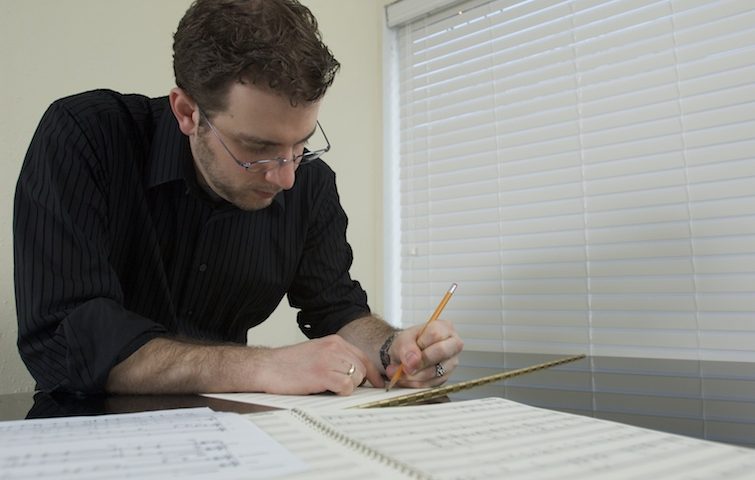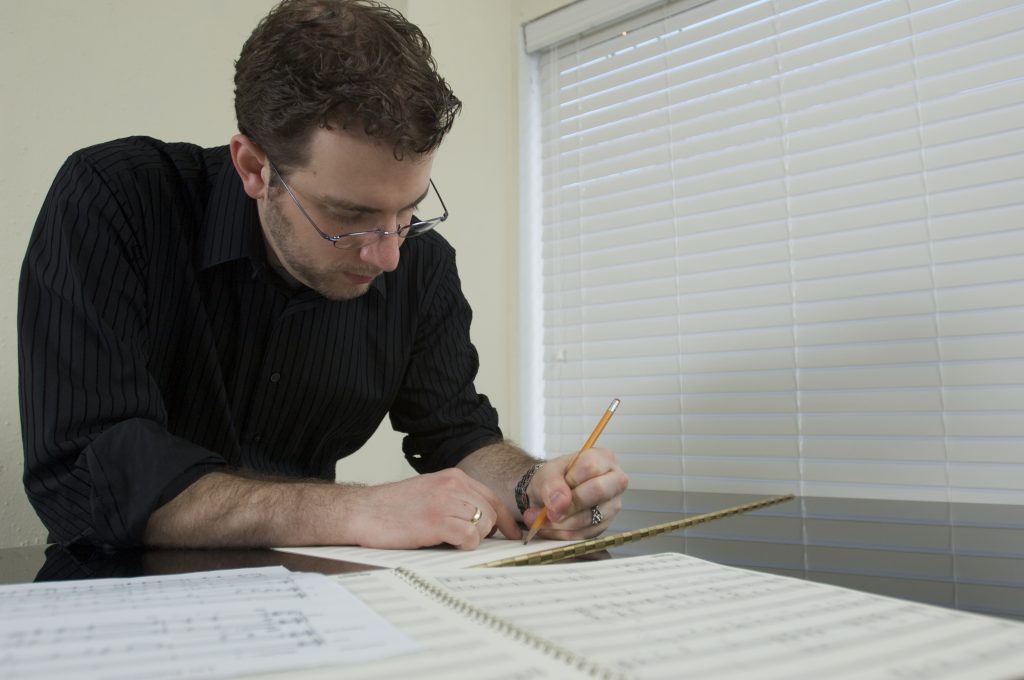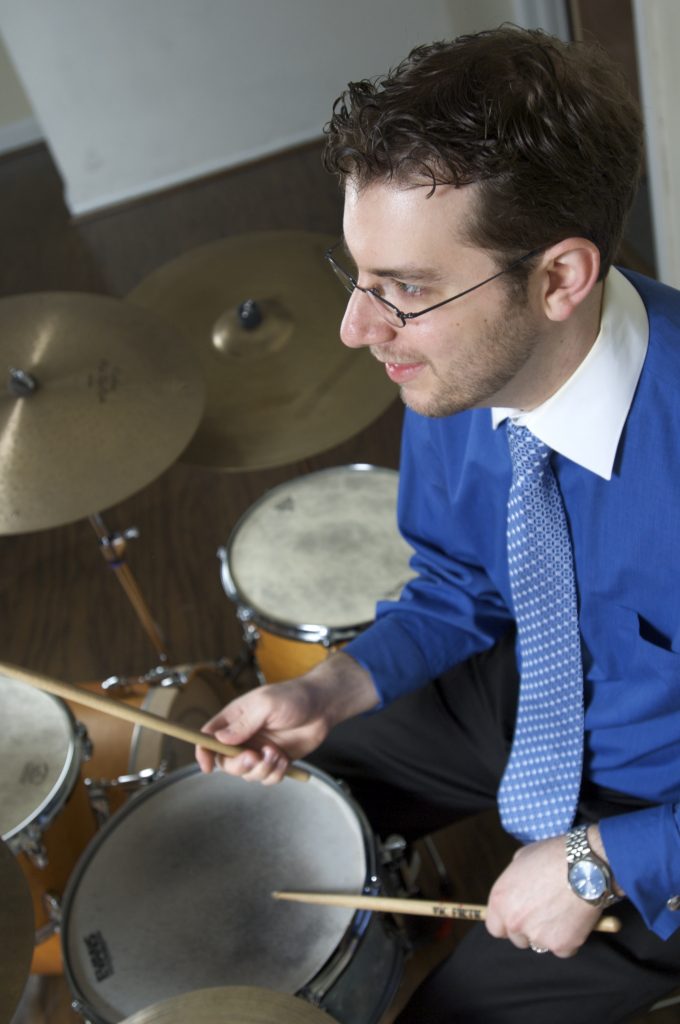Composer Jacob Reed on Collaborating with Dance and Spoken Word Artists

 Sarah Hixon, artistic director of Hixon Dance, sat down with local composer Jacob Reed to talk about his work on their new production A Harrowing World (performing March 25-27, 2022) and what it is like to collaborate with a dance company.
Sarah Hixon, artistic director of Hixon Dance, sat down with local composer Jacob Reed to talk about his work on their new production A Harrowing World (performing March 25-27, 2022) and what it is like to collaborate with a dance company.
Sarah: What is it like to work as music director for a dance company? Can you tell us more about how you collaborate with dancers and choreographers?
Jacob: I enjoy working as music director for Hixon Dance because it often asks for a convergence of my skills as a composer, an improvisor and an educator. Depending on the project I might be analyzing a piece by Poulenc, creating or curating new music to a certain theme or teaching the dancers how to hear the form in a Bach keyboard suite. Collaborating with other disciplines always excites me because I’m fascinated by the ways different media can interact within a work of art and I’m intrigued by the potential creative power that comes from that interaction.
Sarah: You are not only a composer, but also a jazz drummer. How does this influence your composition?
Jacob: Three ways mainly: harmonic language, rhythmic freedom and a belief that the individual performers’ interpretation of the music is not only valued but encouraged. I do my best to broaden the color palette of the harmonies I work with. As a jazz drummer my role is often to set and maintain a steady rhythmic pattern while simultaneously overlaying a contrasting pattern or even disrupting the original pattern. I borrow this interplay in my composing often to give soloistic passages additional fire and energy. What I love most about playing jazz is the potential for moment-to-moment interaction where, if a group is really listening to each other, they could take a tune anywhere. I try to bring that open-minded approach to my writing. Not every new music composer is interested in the performers’ interpretation but I love the idea that my work might sound different depending on who is performing it and I cherish the individuality and interpretive nuances different performers bring to my music.
 Sarah: Tell me more about the new pieces you have composed for A Harrowing World. What is like to set poetry to music?
Sarah: Tell me more about the new pieces you have composed for A Harrowing World. What is like to set poetry to music?
Jacob: Both pieces are settings of poetry by Maggie Smith. “Harrowing” for mezzo soprano and theorbo is all about the stress, struggle and strife of life. There are driving chromatic chords in the theorbo (a lute like instrument) and angular runs in the melody.
In “Rain New Year’s Eve” for soprano and piano, I play with a lot of Smith’s imagery and attempt to convey the emotions and frame of mind of the poem’s speaker. Setting poetry for me is one of the most challenging and fulfilling types of composing. Poetry sits at the line between direct and indirect language and it presents so many avenues for interaction. I can listen to the rhythm of the words or the contours and tone of the diction. I can use the imagery as inspiration or follow the emotional ark of the speaker. And because it requires the human voice to perform I can utilize that commonality between the performer and the audience to better engage the listener.
Sarah: You have worked with dancers and choreographers for many years. What is your favorite part of collaborating with dance?
Jacob: Jaques Dalcroze, a famous music pedagogue, said that the body is the first instrument. I love how connected dancers are to music, physically and creatively. A slight tempo change, a subtle variation of a harmony can illicit profound differences in their performance or choreography. They have that deep relationship. But I also find that the abstraction of dance pairs well with music. I work hard to create meaning in my music and sometimes the abstraction of music and dance gives us as creators the freedom to open a concept up and make it more universally accessible to our audience.
 Sarah: Of all the pieces you’ve written for dance, what is one of your favorites? What recent collaborations have been the most exciting?
Sarah: Of all the pieces you’ve written for dance, what is one of your favorites? What recent collaborations have been the most exciting?
Jacob: Probably “Les Battements,” a setting of a Robert Graves poem for tenor, clarinet and piano. It was commissioned by Hixon Dance back in 2009. It is also one of my more often performed works. Recently, the Central Ohio Symphony premiered Into the Void which I wrote in collaboration with astrophysicist Paul Sutter, OSU Theatre professor Tom Dugdale and video projection designer David Bengali. It is about black holes so it was fun to dive into the relationship between art and science and it was exciting to use the full force of a large orchestra in my composing.
Sarah: What is the best thing about the Columbus arts scene right now?
Jacob: I love how supportive the Columbus arts community is. I think our audiences here value local and independent artists. There are lots of opportunities and financial support vehicles for those artists. Most of the artists in the community understand that supporting each other is the best way to help the scene thrive.
Listen to Jacob Reed’s new compositions in A Harrowing World at Columbus Dance Theatre on March 25-27, 2022. Tickets are on sale now at www.hixondance.com.

